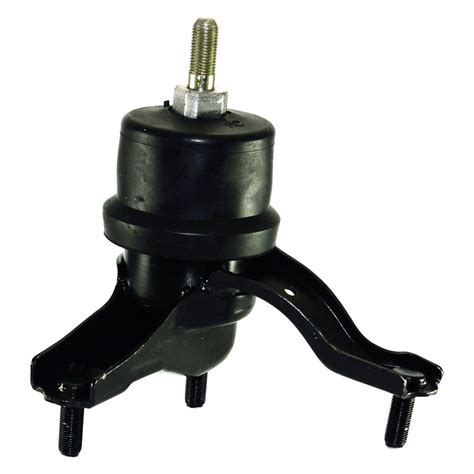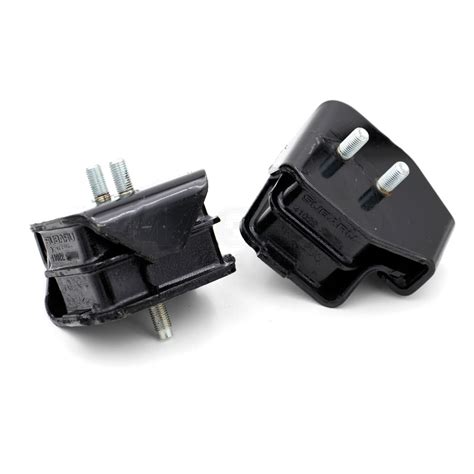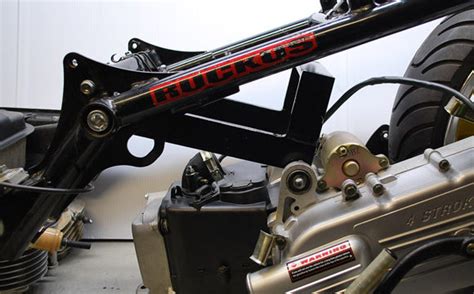Discover the function, benefits, and maintenance of hydraulic engine mounts, along with common issues to ensure optimal performance in your vehicle.When it comes to the smooth operation of your vehicle, hydraulic engine mounts play a crucial role that often goes unnoticed. These innovative components are designed to support the engine while effectively absorbing vibrations and shocks, ensuring a comfortable ride and optimal performance. Understanding what hydraulic engine mounts are and how they function can provide valuable insights into their benefits, including improved ride quality and noise reduction. However, they are not without their share of common issues, which can impact both performance and safety. In this blog post, we’ll delve into the mechanics of hydraulic engine mounts, explore their advantages, discuss potential problems, and provide essential maintenance tips to keep your engine securely supported and running smoothly. Join us as we uncover the vital role these mounts play in your vehicle’s operation.
What are hydraulic engine mounts?
Hydraulic engine mounts are structural components designed to secure an engine to the chassis of a vehicle while simultaneously providing vibration isolation and noise damping; they consist of a rubber and fluid-filled system that allows for flexibility and movement in response to engine forces, which is crucial for maintaining comfort and safety in vehicle operation.
By incorporating hydraulic fluid, these mounts can absorb and dissipate vibrations produced by the engine, thereby reducing the transmission of unwanted noise and vibration into the vehicle’s cabin, ultimately enhancing the overall driving experience, as they play a vital role in the vehicle’s performance and longevity.
Typically, hydraulic engine mounts are engineered to cope with the various dynamic loads imposed by engine operation, such as acceleration, deceleration, and turning, which means they contribute not only to engine stability but also to the precise alignment and functioning of the engine relative to other vehicle systems, thereby ensu
How do hydraulic engine mounts work?
To understand how hydraulic engine mounts work, it is essential to first appreciate their role in isolating engine vibrations and maintaining stability during vehicle operation, as these mounts are engineered with a unique hybrid design that incorporates both rubber and hydraulic fluid, which effectively dampens vibrations transmitted from the engine to the vehicle chassis.
The fundamental principle behind hydraulic engine mounts lies in their ability to absorb shock and vibrations via a silicone or rubber outer casing that houses the hydraulic fluid, allowing them to adapt to varying engine loads and conditions, thereby creating a seamless connection between the engine and chassis that minimizes noise and enhances comfort for the occupants.
When the engine runs, it generates a series of vibrations due to its moving components, and as the engine produces torque, the fluid within the mount can shift to accommodate any changes in pressure; this shifting action dissipates energy and translates to less noticeable vibrations within the cabin, making t
Benefits of using hydraulic engine mounts
One of the most significant advantages of hydraulic engine mounts is their ability to effectively reduce vibrations and noise produced by the engine, which not only enhances the overall driving experience but also contributes to the longevity of engine components, as prolonged exposure to vibrations can lead to premature wear and tear.
Moreover, the use of hydraulic engine mounts enhances vehicle stability; they facilitate smoother weight distribution and absorption of road irregularities, ensuring that the vehicle maintains its composure even under challenging driving conditions, such as when navigating through potholes or making sharp turns, thereby further enhancing driver comfort and safety during daily commutes.
Additionally, hydraulic engine mounts provide significant flexibility compared to their conventional counterparts, allowing for slight movements of the engine as required by real-time driving dynamics, which not only improves performance but also aids in better engine alignment, ultimately resulti
Common issues with hydraulic engine mounts
Hydraulic engine mounts are crucial components in modern vehicles, designed to enhance comfort and reduce vibrations; however, like any mechanical element, they are not immune to problems that can arise over time due to wear and tear or improper maintenance.
One prevalent issue that many vehicle owners encounter is leaking hydraulic fluid, which can significantly compromise the performance of the mounts and may lead to excessive vibrations being transmitted to the cabin, ultimately resulting in an unpleasant driving experience as well as accelerating the wear on surrounding components.
Another common problem associated with hydraulic engine mounts is increased engine movement, which can stem from a loss of structural integrity, often due to the degradation of rubber materials or the failure of the hydraulic fluid, leading to engine misalignment and affecting the overall vehicle handling; recognizing these symptoms early on can help prevent costly repairs down the line, which is why regular inspections should not be overlooked.
Moreover, sometimes the mounts may suffer from audible noise generation that becomes increasingly pronounced, often manifesting as clunks or rattles during acceleration or deceleration, indicating that replacement might be necessary to restore the vehicle to its optimal operational state.
In conclusion, being aware of the common issues with hydraulic engine mounts such as leaking fluid, increased movement, and audible noise can empower vehicle owners to take proactive measures, ensuring not just comfort but also safety while driving.
Maintenance tips for hydraulic engine mounts
When it comes to ensuring the longevity and optimal performance of your vehicle’s hydraulic engine mounts, it’s essential to adhere to specific maintenance tips that can significantly mitigate potential issues, prolong their lifespan, and maintain the integrity of your car’s overall engine performance.
Firstly, regular visual inspections should be conducted to identify any signs of damage or wear on the hydraulic engine mounts, as this allows you to catch problems early on; look for symptoms such as cracks, tears, or leakage of the hydraulic fluid, as these indicators signal that the engine mounts may need replacement to prevent further complications that could affect overall vehicle stability and comfort during operation.
Additionally, keeping up with routine vehicle servicing, including checking the condition of related components such as engine oil levels and transmission fluid, will ensure that the hydraulic engine mounts perform effectively; remember that maintaining appropriate fluid levels is crucial, as it directly impacts the functionality of the hydraulic system, thereby helping to reduce excessive vibrations and ensure a smoother ride.
Finally, consider that avoiding aggressive driving habits can greatly assist in the maintenance of your hydraulic engine mounts, as harsh acceleration, sudden braking, and rough terrains can cause undue stress on these components, leading to premature wear; therefore, practicing gentle driving techniques not only benefits your engine mounts but also enhances overall vehicle safety and performance.
In summary, incorporating these maintenance tips into your vehicle care routine can make a significant difference in the efficacy of your hydraulic engine mounts, ultimately promoting better handling, comfort, and stability while you drive.
Frequently Asked Questions
What are hydraulic engine mounts?
Hydraulic engine mounts are components in a vehicle that use fluid to dampen vibrations and reduce noise while also providing support for the engine.
How do hydraulic engine mounts work?
They work by using hydraulic fluid between two metal plates, allowing controlled movement when the engine vibrates, thus absorbing shocks and minimizing engine movement.
What are the benefits of using hydraulic engine mounts?
The benefits include improved ride comfort, reduced engine noise, enhanced engine stability, and protection against vibrations that can lead to wear and tear.
When should hydraulic engine mounts be replaced?
They should be replaced if you notice excessive engine movement, unusual noises from the engine bay, or if there is visible leakage of hydraulic fluid.
Can hydraulic engine mounts affect vehicle performance?
Yes, faulty mounts can lead to increased vibration, potentially affecting handling, stability, and the overall driving experience.
What materials are hydraulic engine mounts made from?
They are typically made from rubber or polyurethane for durability, with steel or aluminum for structural support.
Are hydraulic engine mounts suitable for all types of vehicles?
Hydraulic engine mounts are commonly used in many vehicles, but the specific design and fitment may vary, so it’s essential to check the compatibility for each vehicle model.





